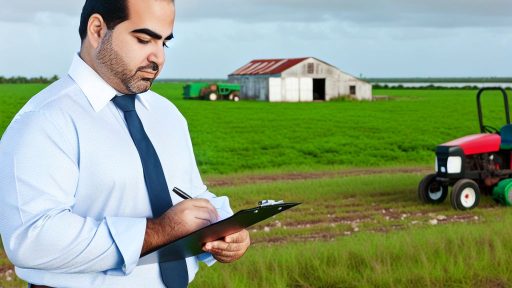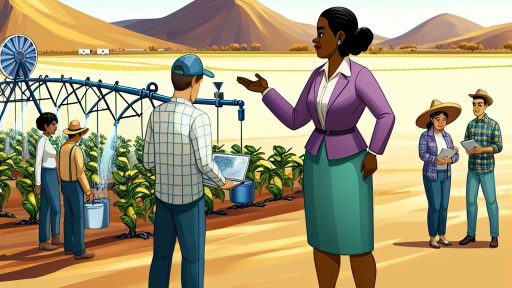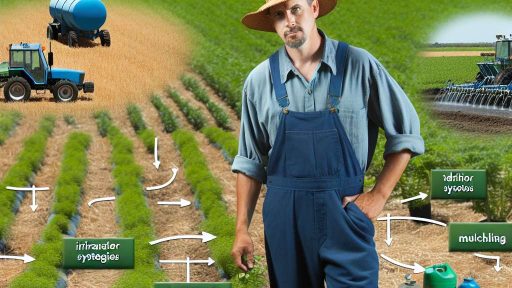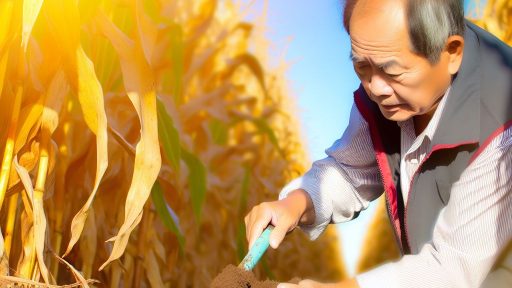Introduction to Water-Saving Irrigation
Importance of Water-Saving Techniques
Water-saving irrigation techniques play a vital role in sustainable agriculture.
These methods reduce water usage while maximizing crop yields.
Farmers face increasing pressure due to climate change and water scarcity.
Consequently, efficient irrigation becomes essential for food security.
Moreover, adopting these techniques benefits the environment significantly.
Benefits of Water-Saving Irrigation
Implementing water-saving techniques leads to reduced water costs for farmers.
This, in turn, enhances agricultural productivity and profitability.
By conserving water, farmers can also protect local ecosystems.
Efficient irrigation methods prevent soil salinization and degradation.
Additionally, these practices help in mitigating the effects of drought.
Types of Water-Saving Irrigation Techniques
Several innovative irrigation systems promote water conservation.
- Drip irrigation delivers water directly to the plant roots.
- Sprinkler systems use less water than traditional methods.
- Surface irrigation can also be optimized for better efficiency.
- Subsurface irrigation places pipes below soil surface, minimizing evaporation.
Farmers can choose the most suitable technique based on their needs.
Transitioning to these methods may require initial investment and education.
However, the long-term benefits far outweigh these challenges.
Collaborative Efforts in Water-Saving Irrigation
Encouraging the adoption of water-saving irrigation is crucial for sustainability.
Transform Your Agribusiness
Unlock your farm's potential with expert advice tailored to your needs. Get actionable steps that drive real results.
Get StartedFarmers, policymakers, and the community must collaborate on this initiative.
By sharing knowledge and resources, they can enhance agricultural resilience.
This collective effort will ensure a more secure and sustainable future.
Overview of Traditional Irrigation Methods and Their Limitations
Common Irrigation Techniques
Traditional irrigation methods include surface, drip, and sprinklers.
Each method serves unique agricultural needs.
Farmers have relied on these techniques for centuries.
Surface Irrigation
Surface irrigation utilizes gravity to distribute water.
Farmers flood fields or furrow them for water flow.
While effective, it often leads to water wastage.
Evaporation and runoff reduce efficiency significantly.
Drip Irrigation
Drip irrigation delivers water directly to plant roots.
This method minimizes water loss through evaporation.
However, it requires a higher initial investment.
Clogging of pipes can also hinder effectiveness.
Sprinkler Irrigation
Sprinkler systems mimic natural rainfall for crops.
They can cover large areas more evenly.
Still, they suffer from high water evaporation rates.
Wind can also affect their efficiency.
Limitations of Traditional Methods
Both surface and sprinkler irrigation methods waste significant water.
Moreover, poorly managed systems can lead to soil erosion.
Drip systems, while efficient, require constant maintenance.
Farmers need to adapt to climatic variations and water scarcity.
Implications for Water Conservation Efforts
Traditional methods often fall short regarding water conservation.
As challenges increase, farmers seek sustainable alternatives.
Showcase Your Farming Business
Publish your professional farming services profile on our blog for a one-time fee of $200 and reach a dedicated audience of farmers and agribusiness owners.
Publish Your ProfileDrip Irrigation Systems
Mechanism
Drip irrigation systems deliver water directly to plant roots.
They use a network of tubes with emitters placed at specific intervals.
This targeted approach minimizes water wastage.
Furthermore, it reduces the risk of weed growth.
As a result, plants receive the optimal amount of hydration.
Also, it allows for better nutrient absorption.
Advantages
Drip irrigation offers numerous benefits for sustainable agriculture.
First, it significantly conserves water compared to traditional methods.
This efficiency helps farmers manage water scarcity dilemmas.
Second, it improves crop yield and quality.
Consequently, farmers can achieve better economic returns.
Additionally, it minimizes soil erosion and nutrient runoff.
Thus, maintaining soil health becomes easier.
Overall, drip irrigation supports environmentally-friendly practices.
Implementation
Implementing a drip irrigation system involves several steps.
Initially, farmers should assess their specific watering needs.
Next, selecting suitable components is crucial for success.
This includes pipes, emitters, and valves tailored for their crops.
Proper installation requires careful planning and layout design.
Once established, regular maintenance is essential to ensure efficiency.
Finally, monitoring water usage can enhance performance over time.
Learn More: Biodiversity Benefits of Integrating Agroforestry in Rural Properties
Soil Moisture Sensors: Technology for Precision Water Management
Understanding Soil Moisture Sensors
Soil moisture sensors provide vital information about soil hydration.
These devices measure the volumetric water content in soil.
Farmers use this data to determine when to irrigate crops.
Consequently, water usage becomes more efficient and sustainable.
Types of Soil Moisture Sensors
There are various types of soil moisture sensors available.
Capacitance sensors measure the dielectric constant of soil.
Tension sensors gauge the water tension in the soil.
Each type has its advantages depending on specific farming needs.
Benefits of Using Soil Moisture Sensors
- Enhanced water conservation is one of the primary advantages.
- They help optimize irrigation scheduling for crops.
- Farmers can reduce water waste significantly.
- Moreover, sensors can improve crop yields and quality.
Implementing Soil Moisture Sensors on Farms
Integrating soil moisture sensors into existing irrigation systems is vital.
Farmers should assess their field conditions first.
Next, they can select the appropriate sensor type.
Installation must follow manufacturer guidelines for accuracy.
Future of Soil Moisture Sensing Technology
Advancements in sensor technology continue to evolve.
Wireless sensors can transmit data in real-time.
This connectivity allows for immediate decision-making on irrigation.
Additionally, integrating AI can further enhance irrigation efficiency.
Delve into the Subject: How Changing Rainfall Patterns Influence Agricultural Land Prices
Rainwater Harvesting Techniques for Agricultural Use
Overview of Rainwater Harvesting
Rainwater harvesting captures and stores rain for agricultural use.
Showcase Your Farming Business
Publish your professional farming services profile on our blog for a one-time fee of $200 and reach a dedicated audience of farmers and agribusiness owners.
Publish Your ProfileThis technique minimizes the dependency on traditional water sources.
Farmers can use harvested rainwater for irrigation and livestock.
Methods of Rainwater Harvesting
Several methods effectively gather rainwater for agriculture.
One common approach involves constructing rainwater tanks.
These tanks can hold substantial volumes of water for later use.
Additionally, farmers can build swales along their fields.
Swales are shallow trenches that direct water to plants.
Moreover, using permeable pavements allows water to seep into the ground.
This method reduces runoff and increases soil moisture levels.
Benefits of Rainwater Harvesting
Rainwater harvesting offers numerous benefits for farmers.
First, it reduces water costs significantly.
Farmers can lower their expenses while increasing water availability.
Furthermore, it enhances the resilience of farms to drought.
Access to stored rainwater guarantees irrigation during dry spells.
Additionally, using rainwater can improve soil quality.
It often contains fewer pollutants than groundwater sources.
Lastly, implementing rainwater harvesting promotes sustainable practices.
Farmers contribute positively to the environment and local ecosystems.
Discover More: How Climate Change Affects Crop Yields and Land Values
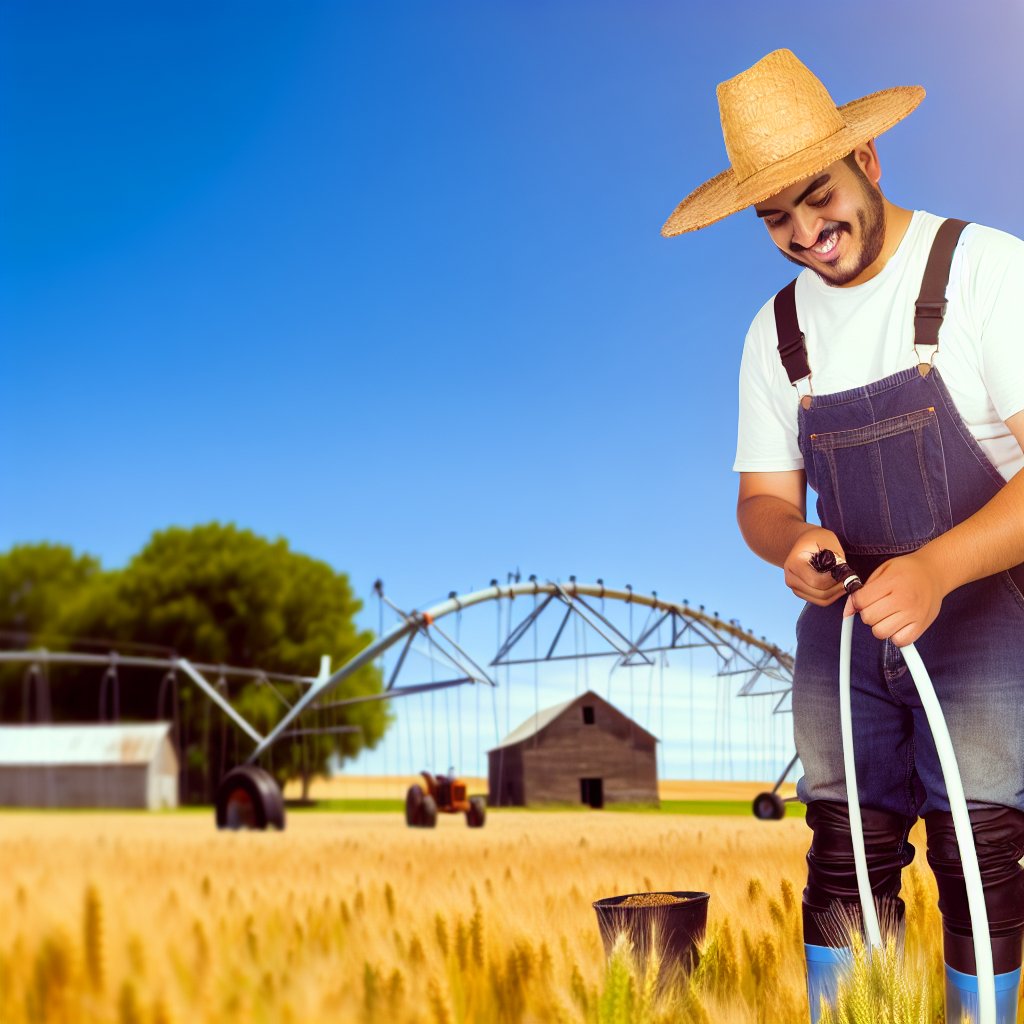
Regenerative Agriculture Practices: Enhancing Water Retention in Soil
Understanding Regenerative Agriculture
Regenerative agriculture focuses on restoring soil health.
This practice builds organic matter in the soil.
As a result, it enhances water retention capabilities.
Farmers increasingly adopt these methods for sustainability.
Soil Health and Water Retention
Healthy soil acts like a sponge for water.
It retains moisture during dry spells.
Consequently, plants access water more efficiently.
Healthy soil also supports diverse microbial life.
Techniques to Improve Soil Water Retention
- Cover cropping protects the soil from erosion.
- Crop rotation enhances soil nutrient levels.
- No-till practices preserve soil structure.
- Application of organic mulches reduces evaporation.
Cover Cropping
Cover crops, such as clover and vetch, provide ground cover.
They prevent soil erosion and improve its structure.
Additionally, cover crops enhance organic matter when decomposed.
Crop Rotation
Rotating crops helps maintain soil fertility.
It prevents the depletion of specific nutrients.
Moreover, crop rotation disrupts pest cycles effectively.
No-Till Farming
No-till farming preserves soil moisture content.
This method reduces soil compaction significantly.
Furthermore, it enhances nutrient cycling and root growth.
Organic Mulching
Using organic materials for mulching conserves soil moisture.
Mulch also suppresses weeds, which compete for water.
As it breaks down, mulch adds nutrients back into the soil.
Integrating Livestock
Integrating livestock into farming systems boosts soil health.
Showcase Your Farming Business
Publish your professional farming services profile on our blog for a one-time fee of $200 and reach a dedicated audience of farmers and agribusiness owners.
Publish Your ProfileAnimals contribute manure, enriching the soil naturally.
They also help with pest control and weed management.
Water-Gathering Techniques
Swales are effective for capturing and storing water.
These landscape features slow water runoff during rains.
They direct water toward plant roots, improving hydration.
Monitoring and Adapting Practices
Regular monitoring of soil health is crucial for success.
Farmers should adapt practices based on soil conditions.
Adjusting techniques enhances overall agricultural productivity.
Explore Further: How Tornadoes Affect Farmland Prices in the United States
Case Studies of Successful Implementation
Innovative Practices in California
California farmers have adopted drip irrigation systems effectively.
This technique minimizes water waste and maximizes crop yield.
Additionally, many growers use soil moisture sensors.
These sensors help determine optimal irrigation schedules.
By implementing these methods, they reduced water usage by 20%.
Tech Advances in Israel
In Israel, farmers leverage advanced irrigation technologies.
They use recycled wastewater for agricultural purposes.
This practice has turned arid land into productive fields.
Furthermore, Israeli researchers developed smart irrigation systems.
These systems adjust water supply based on real-time data.
Success Stories from Australia
Australian farmers have embraced contour farming techniques.
This method involves shaping the land to slow water runoff.
Additionally, they integrate cover crops to retain moisture.
By using these techniques, they have improved soil health.
This, in turn, has led to increased crop yields.
Community Efforts in Kenya
In Kenya, local communities started water catchment projects.
These projects collect and store rainwater for irrigation.
They also promote agroforestry practices among farmers.
This combination enhances local biodiversity and reduces erosion.
Consequently, crop production in these regions has significantly increased.
Government Policies and Incentives Supporting Sustainable Irrigation Solutions
Overview of Current Policies
Governments worldwide implement various policies to promote sustainable irrigation solutions.
These policies aim to improve water use efficiency in agriculture.
For instance, the U.S. Department of Agriculture supports innovative irrigation technologies.
In addition, EU directives encourage member states to enhance water resource management.
Incentives for Farmers
Financial incentives play a crucial role in adopting water-saving irrigation methods.
Many governments provide tax breaks for farmers who invest in sustainable technologies.
Grants are also available to assist with the costs of upgrading irrigation systems.
Moreover, low-interest loans help farmers finance water-efficient projects.
Training and Education Programs
Education initiatives support farmers in implementing innovative irrigation techniques.
Workshops and training sessions teach water management skills and best practices.
In collaboration with agricultural extension services, governments offer hands-on training.
Showcase Your Farming Business
Publish your professional farming services profile on our blog for a one-time fee of $200 and reach a dedicated audience of farmers and agribusiness owners.
Publish Your ProfileThis education boosts farmer confidence in adopting new technologies.
Collaborations with Private Sector
Partnerships between governments and private organizations promote sustainable irrigation.
These collaborations often lead to the development of cutting-edge technologies.
By combining resources, stakeholders can create comprehensive irrigation solutions.
Additionally, private sector involvement can enhance research and development efforts.
Regulatory Frameworks
Sound regulatory frameworks ensure effective implementation of water-saving policies.
These regulations often require adherence to environmental standards in agriculture.
Furthermore, compliance checks help maintain accountability among farmers.
Governments also monitor water usage to identify areas for improvement.
Additional Resources
Sustainable Agriculture in Idaho | The Nature Conservancy
Water scarcity in agriculture: An overview of causes, impacts and …

